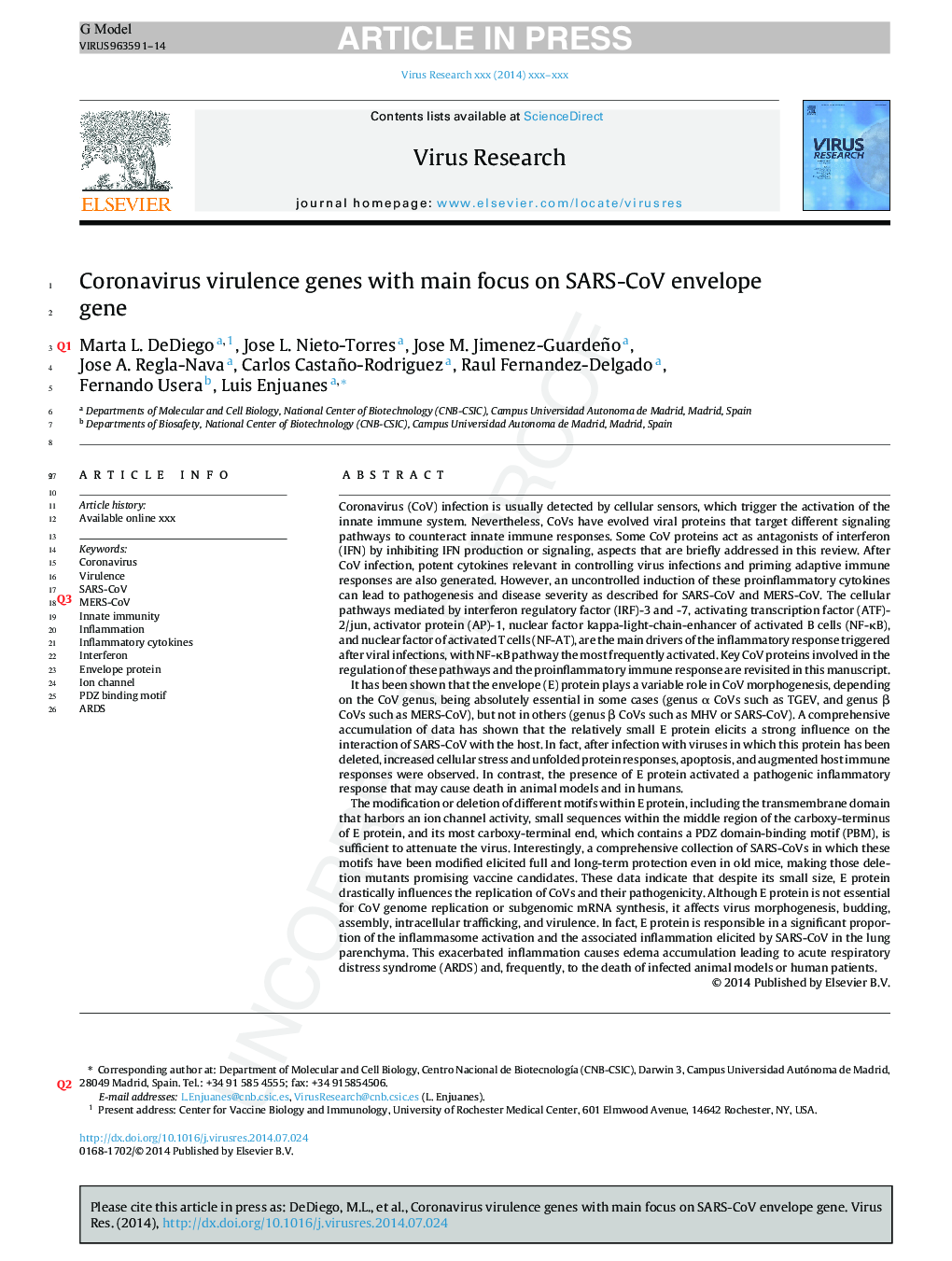| Article ID | Journal | Published Year | Pages | File Type |
|---|---|---|---|---|
| 6142300 | Virus Research | 2014 | 14 Pages |
Abstract
The modification or deletion of different motifs within E protein, including the transmembrane domain that harbors an ion channel activity, small sequences within the middle region of the carboxy-terminus of E protein, and its most carboxy-terminal end, which contains a PDZ domain-binding motif (PBM), is sufficient to attenuate the virus. Interestingly, a comprehensive collection of SARS-CoVs in which these motifs have been modified elicited full and long-term protection even in old mice, making those deletion mutants promising vaccine candidates. These data indicate that despite its small size, E protein drastically influences the replication of CoVs and their pathogenicity. Although E protein is not essential for CoV genome replication or subgenomic mRNA synthesis, it affects virus morphogenesis, budding, assembly, intracellular trafficking, and virulence. In fact, E protein is responsible in a significant proportion of the inflammasome activation and the associated inflammation elicited by SARS-CoV in the lung parenchyma. This exacerbated inflammation causes edema accumulation leading to acute respiratory distress syndrome (ARDS) and, frequently, to the death of infected animal models or human patients.
Related Topics
Life Sciences
Immunology and Microbiology
Virology
Authors
Marta L. DeDiego, Jose L. Nieto-Torres, Jose M. Jimenez-Guardeño, Jose A. Regla-Nava, Carlos Castaño-Rodriguez, Raul Fernandez-Delgado, Fernando Usera, Luis Enjuanes,
